Eleven Shades Of Evil
Just in time for the holidays (not to mention the headlines), I bring you EVIL. The ultimate fantastical topic.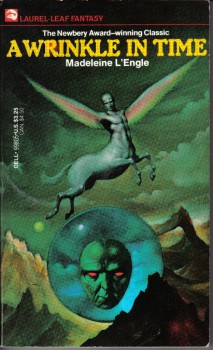
Now, just so we’re clear from the get-go, I’m against it. Against evil, that is. As are we all, surely. But, once I’ve got my writer’s hat on (or, for that matter, my reader’s hat), evil becomes indispensable. I not only love it, I’ve just gotta have it. For writers, evil belongs in the same all-purpose toolbox as conjunctions, theme, and essential miscellany like the average blooming season of Agapanthus africanus.
Categories first. When it comes to speculative fiction, and its offspring in film, television, and the ‘net, I submit that evil comes in the following basic flavors, and in the following entirely arbitrary order:
1) Abiding
2) Petty
3) World-conquering
4) Internal
5) Atavistic
6) Alien
7) Humorous
8) Inscrutable
9) Insane
10) Passive and
11) Institutional
Let’s take these one at a time (because taking two at a time would try the patience of a saint).
First up, we have A for Abiding. By “abiding evil” I’m referring to that brand of evil that functions like a cloud, a miasma of hatred. It doesn’t have much direction; it isn’t goal-oriented; it’s just there, like sunlight, atoms, or Jello. Examples that spring to mind include the interstellar curtain of darkness from Madeleine L’Engle’s A Wrinkle In Time, or the pulsing, fleshy cavern into which Jonah Koenig stumbles in Laird Barron’s supremely disquieting “Bulldozer.”
Petty evil is the kind of thing that arises from misplaced entitlement (“I’m hungry, so I’ll just take that pack of Twinkies”) or boredom (“I’m looking for a laugh, so I’ll just rob that fellow there”) or low ambition combined with a failed moral compass (“I’ve got no idea what to do with my life, so crime at least gives me a rush, and that guy’s got a Twinkie –– which I want, even though I’m not hungry”).
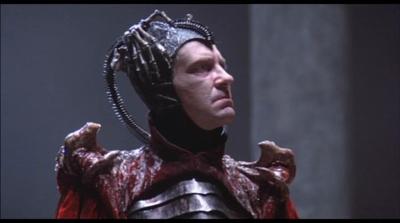 Stories that focus on characters who exhibit this sort of small-scale evil typically explore the redemption and rehabilitation of said character (or the failure thereof). Alternately, a main character may be opposed by petty evil: bandits, pickpockets, the bully who extorts the nerdy kid and steals his lunch money. In this case, the story drifts toward overcoming the petty evildoer and putting him/her/it in its/her/his place. (Pronouns: can’t live with ‘em, can’t live without ‘em.)
Stories that focus on characters who exhibit this sort of small-scale evil typically explore the redemption and rehabilitation of said character (or the failure thereof). Alternately, a main character may be opposed by petty evil: bandits, pickpockets, the bully who extorts the nerdy kid and steals his lunch money. In this case, the story drifts toward overcoming the petty evildoer and putting him/her/it in its/her/his place. (Pronouns: can’t live with ‘em, can’t live without ‘em.)
World-conquering evil, rapacious and unquenchable, is the one form of evil whose presence in books and scripts I DESPISE. Why? Because it’s self-immolating and essentially uninteresting. What do most comic-book bad guys want? To conquer the world. And then what? Demand that the most attractive slaves and underlings spend the rest of eternity peeling the most attractive grapes? I mean, seriously: what’s Voldemort gonna do once he kills off all the kind, educated wizards? Learn needlepoint? Please.
Big-time evil with a primary goal of constant and ultimate conquest arrives with zero nuance, and to my mind isn’t worth explanations or even a modicum of backstory, since baddies of this type are (at most) greedy children, not three-dimensional characters. Writers of the future, I beg of thee: better to keep your antagonists more discrete, with specific goals and needs; that way, their foils (the protagonists) have specific problems to thwart. Moreover, heroes (even the most heroic) tend to flatten out when faced with Major League Conquer-the-Galaxy Evil; they have nothing much to play against.
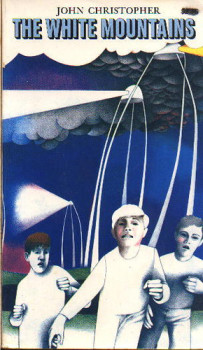 Consider Harry Potter: an interesting child hero who, by his teenage years, is nothing but Destiny On the March; poor Potter becomes stock “good” battling central casting “evil.” Really, it must have been awful for Harry. Every day’s the same: haul your backside out of bed and battle Voldemort. Yawn. Might as well change your name to Sisyphus.
Consider Harry Potter: an interesting child hero who, by his teenage years, is nothing but Destiny On the March; poor Potter becomes stock “good” battling central casting “evil.” Really, it must have been awful for Harry. Every day’s the same: haul your backside out of bed and battle Voldemort. Yawn. Might as well change your name to Sisyphus.
With Evil Number Four, we come to evil from within. An outgrowth, this, at least in terms of scale, of petty evil, and best handled, on the story-telling front, by examining a deeply conflicted hero or even an anti-hero. Moorcock’s Elric comes to mind, a man who would prefer to bring peace and law but invariably wrecks whatever he encounters. Elric may be more of a sketch than a fully fledged character, but the example stands.
Literature of all varieties teems with explorations of tormented characters who fight against their own demons, only to lose at least often enough to both drive the story and damage those they love. Fertile soil, this, and so much more interesting than the next iteration of Lex Luthor (see above – ‘cos Lex, if he can, will despoil everything, everywhere, just ‘cos).
Atavistic evil (Item the Fifth) might be best thought of in terms of “Alignment: neutral” from D&D or similar role-playing systems. A pack of slavering wolves isn’t out to pull down and devour the hapless woodsman because wolves are evil; they’re just hungry. It’s in their nature to pursue prey––and who can blame them? Humans are crunchy and taste good with ketchup.
On a related note, the little “moties” from Niven & Pournelle’s The Mote In God’s Eye could also fit here; is it really their fault that they just love to dismantle things (including the space ships they’re riding in), sometimes with devastating results?
The kissing cousin of atavistic evil is alien evil. Let’s call it conscious evil hailing from a far distant, probably previously unknown place. The Masters from John Christopher’s The White Mountains books illuminate this category to a tee. These squat, brown, tentacled, tri-legged uglies come to earth specifically to conquer it, use its resources, and wipe out anything that happens to object to that plan. Hatred of humankind is secondary, or perhaps not even on the Masters’ radar; they have their own goals, their own rationale.
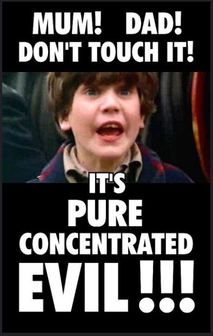 On a comic level, the Vogons (The Hitch-Hiker’s Guide To the Galaxy) fit the same bill. Destroy earth for the sake of an interstellar bypass? Sure, let’s get to it.
On a comic level, the Vogons (The Hitch-Hiker’s Guide To the Galaxy) fit the same bill. Destroy earth for the sake of an interstellar bypass? Sure, let’s get to it.
And then there are the Aliens, as in the movie franchise of the same name. These critters are a fine mix of atavistic and alien. They rely on hosts (human or otherwise) to breed, but they also evince sufficient intelligence that we viewers suspect them of having larger goals — goals that we have nothing to do with.
On to number seven. By inscrutable evil, I’m tapping into creatures (and sometimes human characters) whose motivations are obscure (as in “alien evil,” above) but are in no way defined by the constraints of a society or system. The Shrike from Dan Simmons’ Hyperion novels comes to mind.
One danger here is that even the author doesn’t know what motivates these sometimes helpful, sometimes lethal creations. Tricksters, these; brujos of a different order. “Monsters” of this stripe can be a very effective hook for readers, because the page-turning question of “Why?” becomes, if handled well, a near-constant driving force.
Number eight: amusing, hysterical evil! What fun! Consider “Evil,” the actual name for David Warner’s character in the Terry Gilliam film, Time Bandits (1981). He’s like the amusing flipside of Voldemort, a doofus with enormous ambition and insufficient smarts to realize anything much. (Even his lair, the Fortress of Ultimate Darkness, is a joke; it’s huge, and not much else.)
Do such characters amount to anything significant? Probably not, but then, a few good laughs have their own intrinsic value, and there’s nothing at all wrong (as Gilliam and another Terry, Sir Terry Pratchett, both know) with a giggle or three.
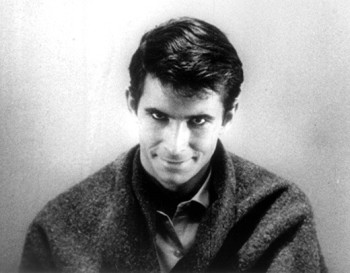 In the ninth spot, I offer the evil of insanity. Norman Bates (from Pyscho, 1960) makes a fine exemplar.
In the ninth spot, I offer the evil of insanity. Norman Bates (from Pyscho, 1960) makes a fine exemplar.
The trick with crazy evil-doers is to resist the temptation to rationalize or explain their motivations and behavior. One can give a diagnosis, but even that is risky; consider the unintentionally hilarious “explanation” for Mr. Bates’s behavior that ends Pyscho. Crazy and inscrutable evil often go hand-in-hand, and work to great effect when they do. They make us “normal” folk feel out of control.
Consider the monster from Stephen King’s “The Boogeyman,” a force of nature that lurks under beds and kills children even when their parents are right in the next room. The how of the boogeyman is never explained, nor is its motivation; what matters is that it’s malevolent and has extraordinary reach. In fact, it’s unstoppable – and that right there is all the fuel King’s story requires.
Numero diez: the inherent evil of she, he, or it who takes no action while evil transpires. Given the awful fact that everyone I’ve ever met, myself included, is guilty of this to at least some degree, the fictional possibilities are endless (and very, very useful).
Last but not least, I’d like to introduce the monolith of government or society, or even large corporations (a popular boogeyman in its own right, especially in sci-fi and eco-fictions). Institutional evil trumps individual agency by systematizing the doing of wrong. Think stalwart dystopias like Orwell’s 1984 or Atwood’s The Handmaid’s Tale — although I hear now that the term “dystopia” is out of favor; I’m told we need a new term. I hereby nominate “lousytopia.” Thoughts?
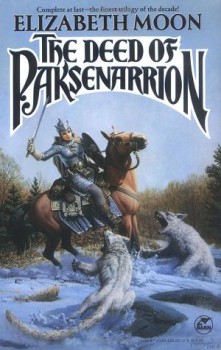 One high fantasy cycle that deals well with institutional evil is Elizabeth Moon’s The Deed Of Paksenarrion and its twin prequels, especially Surrender None: The Legacy Of Gird, a real sleeper that deserves a wider readership. In the former, sword-swinging Paksenarrion roots out evil one individual (or monster) at a time, but discovers along the way that the upper tier of her entire society is to-the-core rotten.
One high fantasy cycle that deals well with institutional evil is Elizabeth Moon’s The Deed Of Paksenarrion and its twin prequels, especially Surrender None: The Legacy Of Gird, a real sleeper that deserves a wider readership. In the former, sword-swinging Paksenarrion roots out evil one individual (or monster) at a time, but discovers along the way that the upper tier of her entire society is to-the-core rotten.
Gird, a few generations before, has much the same revelation, but Moon lays the blame for society’s malevolence well outside humanity, however; it’s a nasty godling named Liart that’s wreaking all this havoc. No doubt Pol Pot, Joseph Kony, and all the accused at Nuremberg would have loved to fall back on that particular excuse.
Obviously, all of these flavors of evil can interact, bleed over, or inappropriately mate with each other. (Yuck: what a disgusting image.) Let’s just say there’s a lot of overlap, and that some characters wear multiple evil hats. Alex, from A Clockwork Orange, for example, is petty and crazy and (at times) hilarious.
The ongoing inclusion of evil in fictions, fantastic or otherwise, not to mention all the other arts, does present one danger that I had not expected on that fateful day, whenever it was, that I first hung out my “I’m a Writer” shingle, and that is the curse of a certain necessary moral relativism.
To wit, in order to write fully developed characters, I need to understand them, empathize, explore them deeply. This is par for the course, almost a platitude …
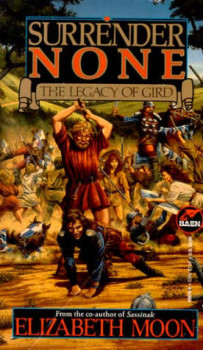 … but, when writing evil characters, human or otherwise, I am essentially tempting myself into taking their side — to not only see their point of view but to live it, and thereby approve of it.
… but, when writing evil characters, human or otherwise, I am essentially tempting myself into taking their side — to not only see their point of view but to live it, and thereby approve of it.
This is diabolical territory, truly. The desire to see all sides of an issue can, if not constantly analyzed and parsed, stunt one’s ability to name evil in the world itself, to call it out and make it answer for its crimes. Some artists do this very well, but others retreat into ever-widening labyrinths of apology and what-ifs.
Of which sort am I? I suppose time will tell.
Time.
Now there’s an evil that needs to be named.
‘Til next time, dream hard.
Write harder.
Onward.
Mark Rigney has published three stories in the Black Gate Online Fiction library: ”The Trade,” “The Find,” and “The Keystone.” Tangent called the tales “Reminiscent of the old sword & sorcery classics… once I started reading, I couldn’t stop. I highly recommend the complete trilogy.” In other work, Rigney is the author of “The Skates,” and its haunted sequels, “Sleeping Bear,” and Check-Out Time. His website is markrigney.net.
Great article. The nature of evil is something I’ve given a lot of thought over the years, somewhat for my own philosophical studies but also as a fiction writer.
I love a “good” villain, especially one who could almost be a hero or good guy if they would only take a step, sometimes a small one, in another direction.
With the possible exception of the insane villain, I think motive is key to making such a character interesting to the reader. As mentioned, world-conquering evil (especially in fantasy) has been done to death and quite badly, but even that can be made interesting if the main villain has some personal reasoning behind what he or she is attempting.
Thanks, Ty. You’re very kind. (And not at all EVIL.)
I suppose I agree that even a world-conquering baddie is more intriguing if they have motivation, but the eventual goals are so dull, any logical lead-in tends to be entirely outweighed…
Glad to hear I’m not the only one who is OBSESSED with EVIL.
Hi Mark,
Great article and I appreciate your insight into the various levels of Evil. Very helpful when defining it for a story.
The nature of Good and Evil has interested me for a long time. Quite a few years ago, I wrote an essay asking whether the Devil was really evil or has he just had bad press. After all, down through the ages, the very nature and definition of evil itself has changed.
A word on behalf of world-conquering evil. What makes it interesting to me is how far the antithesis of this evil will go to maintain their own world. Will they betray who and what they are to protect their patch of ground or their freedom. The Luke Skywalker and Darth Vadar duel comes to mind where Luke refuses to fight. But the lines between good and evil are not as clearly drawn in the book “Colossus” where two supercomputers (Russian and American) take over the world by literally controlling everything electronic. As a result of this takeover, all war, famine and disease were being wiped out world-wide. What’s the problem here? True, Forbin is forced to interact with Colossus and he fights to dismantle the computer, which has killed people to force Forbin’s obedience. The real issue though is personal freedom and how you would define “better world.” Ironically this fear of artificial intelligence brought on warning by Stephen Hawking that the development of AI could bring on the end of mankind, instigating another world-wide evil. This brings up another question. What is the nature of intelligence. Is thinking just brain power and how much of it is influenced by emotions, as well as philosophical, ethical and moral values. When you take away all that, can you call the result “thinking” or is it still computing?
Harry Potter, Voldemort’s antithesis, fights to protect his friends and his school, Hogwarts, eventually seeing that this won’t be possible as long as Voldemort survives. This highlights another interesting aspect of world-conquering evil: their vulnerabilities. And the vulnerabilities of the heroes and anti-heroes. If evil has no vulnerabilities, nothing can stop it. If the hero or anti-hero have none, again, there is no story.
The subject of good and evil is so fascinating and what makes it more so is evil itself. Thanks for your breakdown. And my compliments for a very thought provoking article.
Barbara
Barbara – thanks for your thoughts! You’re very kind.
Harry and Voldemort. The two are well matched as opponents, I grant you that. They are similarly dedicated, possessed of great will power, and great power in general. My beef with Mr. V. is theoretical, I suppose, in that there’s no real chance of his winning. But if he did, what becomes of him? Does he go out and conquer the moon?
I also think scale is an issue, a topic I wrote about somewhere on these pages before. It’s hard to work up much empathy for the deaths of many, many people — I wish that weren’t so, but it’s true. Our human cognition and our relational circles of influence dictate that most often, we feel most strongly about those whom we know, those who are close to us. It’s easy to shrug off mass destruction or killing on the far side of the planet. (Too easy, yes. Much too easy.)
This plays into my dislike of world-conquering evil, because such things tend to play out at such a broad level. Voldemort knocks down the Millennial Bridge, and hundreds die? Okay: that’s bad. But it doesn’t tug at my heartstrings. It doesn’t rise above the level of incident. Compare: strike a blow against Ginny Weasley, and I’m going to get riled up. Because I care about Ginny. Hurting Ginny is EVIL.
But I know I am preaching to the choir.
And it would be positively EVIL of me to keep on any further down that road!
Thanks, one and all, for reading…and if anyone has any other categories to add, please do.
My greatest fear in offering this post is that it would be too slapdash, that it would miss something obvious.
Still fearful on that score.
: )
Onward!
P.S. – Barbara: you should check out the song “The Devil Is My Friend” by the Jazz Butcher. Jaunty, hilarious, and with a few decent (implied) questions along the way.
[…] of condemnation regarding the Masters. Intelligent and fascinating though they are, the Masters are evil, and what they do to Eloise is the last proof […]